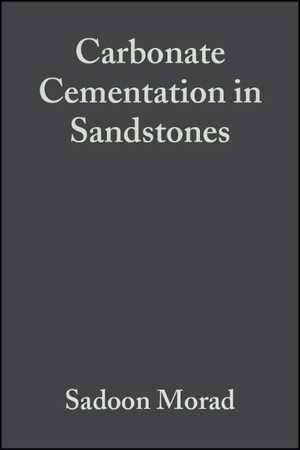Carbonate Cementation in Sandstones
Distribution Patterns and Geochemical Evolution
International Association Of Sedimentologists Series

1. Auflage Mai 1998
528 Seiten, Hardcover
Wiley & Sons Ltd
Carbonate cements are very common and abundant in clastic
sequences. They profoundly influence the quality of hydrocarbon
reservoirs and supply important information on palaeoenvironments
and the chemical composition and flow patterns of fluids in
sedimentary basins. Despite this importance, their distribution
patterns in time and space and their geochemical evolution are not
yet deeply explored and elucidated. This Special Publication
contains 21 review papers and case studies on carbonate cementation
in clastic sequences written by invited specialists on the subject.
These papers present a wide and deep coverage that enhance our
knowledge about carbonate cementation in various clastic
depositional environments, tectonic settings and burial histories.
The book will be of special interest to researchers, petroleum
geologists and teachers and students at the postgraduate level.
If you are a member of the International Association of
Sedimentologists, for purchasing details, please see:
http://www.iasnet.org/publications/details.asp?code=SP26
patterns and geochemical evolution.
Origin and spatial distribution of early vadose and phreatic
calcite cements in the Zia Formation, Albuquerque Basin, New
Mexico, USA.
Carbonate diagenesis and porosity evolution in sheet-flood
sandstones: evidence from the Middle and Lower Lunde Members
(Triassic) in the Snorre Field, Norwegian North Sea.
Carbonate diagenesis in non-marine foreland sandstones at the
western edge of the Alleghanian Overthrust Belt, southern
Appalachians.
Paleogeographic, paleoclimatic and burial-history controls on
the diagenetic evolution of reservoir sandstones: evidence from the
Lower Cretaceous Serraria sandstones in Sergipe-Alagoas Basin, NE
Brazil.
Carbonate cements in the Tertiary sandstones of the Swiss
Molasse Basin: their petrography, isotope geochemistry and
relevance to paleohydrodynamic reconstruction.
Carbonate cement in the Triassic Chaunoy Formation of the Paris
Basin: distribution and effect on flow properties.
Calcite cement in shallow marine sandstones-growth mechanisms
and geometry.
Origin of low-permeability calcite-cemented lenses in
shallow-marine sandstones and CaCO3 cementation mechanisms: an
example from the Lower Jurassic Luxemburg Sandstone Formation,
Luxemburg.
Geochemical history of calcite precipitation in Tertiary
sandstones, Northern Apennines, Italy.
Diagenetic evolution of synorogenic hybrid and lithic arenites
(Miocene), northern Apennines, Italy.
Carbonate cementation in Tertiary sandstones, San Joaquin Basin,
California.
Carbonate cementation in the Middle Jurassic Oseberg reservoir
sandstones, Oseberg field: a case study of late diagenetic-high
temperature poikilotopic calcite.
Origin and timing of carbonate cementation of the Namorado
Sandstone (Cretaceous), Albacora Field, Brazil: implications for
oil recovery.
Structural controls on seismic-scale carbonate cementation in
hydrocarbon-bearing Jurassic fluvial and marine sandstones from
Australia: a comparison.
Carbonate cementation - key to reservoir properties of four
sandstone level (Cretaceous) in Hibernia Oilfield, Jeane d'Arc
Basin, Newfoundland, Canada.
The significance of d13C of carbonate cements in reservoir
sandstones: a regional perspective from the Jurassic of the
Northern North Sea.
Origin and significance of fracture-related dolomite in porous
sandstones: an example from the Carboniferous of County Antrim,
Northern Ireland.
Saddle (baroque) dolomite in carbonates and sandstones: a
reappraisal of a burial-diagenetic concept.
Application of quantitative back-scattered electron image
analysis in isotopic interpretation of siderite cement: Tirrawarra
Sandstone, Cooper Basin (Australia).
Carbonate cement dissolution during a cyclic CO2 enhanced oil
recovery treatment.
